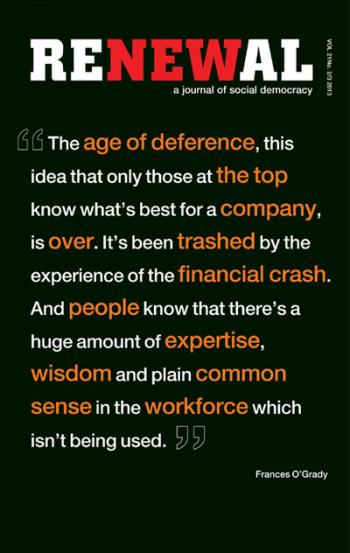
Blue Labour, One Nation Labour, and the lessons of history
Renewal - Print ISSN 0968-5211 - Online ISSN
Volume 21 Number 2-3 (2013)
Blue Labour, One Nation Labour, and the lessons of history
Jon Lawrence
Abstract
With the clock ticking down to the next election the Labour Party faces big questions about how to construct an attractive, plausible alternative to the politics of the Coalition. It needs a narrative which blames the economic crash of 2008-12 on unfettered capitalism rather than alleged Labour profligacy, but more than that it needs a vision of the future that can capture voters’ imagination and persuade them that Labour can make a difference in tough times. The debates of the past three years have thrown up many powerful ideas which seek to provide both narrative and vision. Maurice Glasman’s Blue Labour project began this process by declaring open season on many of the party’s sacred cows (Glasman, 2010; Glasman et al., 2011; Davis, 2011). Its style was avowedly controversial; it was a good way to gain attention for new ideas, but not a good way to ensure that they were taken seriously by the sceptical and unaligned. By 2011 many felt that the wheels had come off the Glasman wagon (Davis, 2012). But Blue Labour’s core propositions have not gone away; rather, over the past year they have fed into the debate about how the party might put flesh on Ed Miliband’s proclamation of a new politics of ‘One Nation Labour’ (Cruddas, 2013).
To cite this article
Jon Lawrence (2013) Blue Labour, One Nation Labour, and the lessons of history, Renewal, 21(2-3 )
